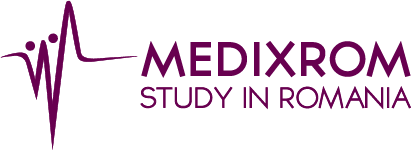Grigore T. Popa University of Medicine and Pharmacy
- Affordable tuition fees of €5,000 per year.
- Entry is in October.
- Globally Recognised
Why Choose the ‘Grigore T. Popa” University of Medicine?
-
‘Grigore T. Popa” University of Medicine and Pharmacy is one of Romania’s oldest academic institutions.
-
It was established in 1879 and named after world renowned neuro-endocrinologist Grigore T. Popa.
-
The Academic Medical Centre consists of 28 laboratories, several auditoriums, and a top-class library with over 470,000 volumes.
-
The university is home to over 800 highly regarded professors offering graduate and postgraduate programmes to over 4,000 students.
-
The university has connections with many world-renowned universities including the University of Freiburg in Germany and the Universities of Torino and Parma in Italy.
-
The Gr. Popa” University of Medicine and Pharmacy should be top of the list for anyone seeking a top class medical university in Eastern Europe.
What do the Medicine courses involve?
-
The Medicine course lasts for six years and is taught entirety in English.
-
The first academic cycle lasts 3 years with a focus on pre-clinical studies and the related medical fundamentals.
-
The next three years focus on clinical education and includes surgical and preventive medicine courses and hospital experience.
-
Every summer, from year one to five of studies, students must work in university affiliated hospitals, medical centres or clinics.
-
Students need to complete a minimum of four weeks of work experience per year and get at least 800 hours practical experience over the first five years.
-
In their final year, students must write a personal research dissertation on a topic assigned to them by their instructor.
-
To complete their studies, students must sit the state examinations, including a written exam and oral presentation defending their thesis research.
-
Successful students are awarded a master’s degree and the title of “Physician” (MD).
-
All qualifications are recognised globally allowing graduates to practice in any EU member state or anywhere around the world.
How much do the programmes cost?
| PROGRAMME |
PROGRAMME STARTS |
ANNUAL FEES (Euro) |
|
Medicine |
October |
5000 |
|
Bioengineering |
October |
2500 |
|
Pharmacy |
October |
5000 |
|
Dentistry |
October |
5000 |
Admission to Iasi University
Applicants must submit the following documents:
- A completed application form.
- The Baccalaureate diploma or both an equivalent copy and authenticated translation in Romanian (translated if the original is in another language than English or French) and transcripts of records / diploma supplement (copy).
- Transcript of records in recognition of previous studies for the university.
- Copy of valid passport pages 1,2,3,4 or an official valid ID.
- Birth certificate – both a copy and authenticated translation is required.
-
Medical certificate containing:
- proof of vaccination against hepatitis B
- information about any chronic diseases.
- A full psychological assessment
- 4 passport sized photos
Life in Iasi
-
Iasi is the second biggest city in Romania with an estimated population of 343,000.
-
It was only after the 1950s, when waves of heavy industrialisation, laid the foundations for the prosperity we see in the city today.
-
The city’s long history has left Iasi with many significant buildings, statues and monuments scattered across it.
-
The city of Iasi is a wonderful place to live and is a city with a great culture, low cost of living and affordable tuition fees.
-
Students can also enjoy the many bars and discos in the student district and with over 60,000 students in the city, these areas have a great atmosphere.
-
There is also a really efficient transport system to ensure you can get where you want 24 hours a day.
Life in Romania
-
Romania is a country in the Southeast of Europe with an estimated population of 19 million. Bucharest, the capital city, has a population of around 1.7 million.
-
After WWII Romania was under communist control until 1989, when it declared itself a free democracy, and began to rebuild its economy.
-
Romania is now a very modern country and has a similar standard of living to other EU member states.
-
Romania has a very low cost of living, making its famous universities an appealing destination for students from all around Europe and the rest of the world.
-
Romanian universities are among the best in Europe and thousands of international students pursue their studies there every year.
-
Modern Romania is a wonderful mix of cultures where people from all over the world are welcomed warmly by the locals.
